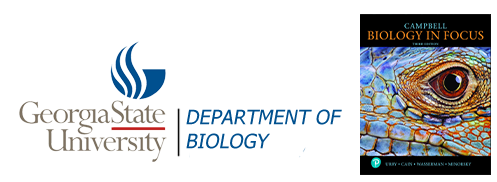- Home
Welcome !
Welcome to john houghton's home page for his biology courses. This site is designed as a hub for curating and sharing lectures, course syllabi, assignments, and links to relevant resources. Use the menu bar at the top of the screen to navigate through the site.
(Please note: this page is currently under construction.)

- BIOL 2107
Fall '22 CRN87989
Lectures: (1)
- Courses
- Resources
General Resources

Tectonic Plates -over geological time -MOVIE
To quickly summarize the concepts of "living organisms" that we discussed in the last lecture....
The Biochemistry of Living forms.
Organic matter: Carbon, Hydrogen, Oxygen,…(C H O N P S)...
The Biochemist's perspective on "Life" can be appreciated as being a series of "cycles", Carbon, Nitrogen, Sulphur with a few requisite metals thrown in for good measure...

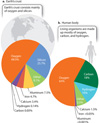
So, long with these quite different and limited need for the periodic table of elements, we can see that Life (whatever it "is" has a major influence on its own chemistry...
Oh by the way, life is also "British" !!!
...the importance of driving on the "right" side of the road, or more correctly, the importance of a good "hand shake"!!!!



Just like humans, molecules have a potential "mirror image" or chirality. While most non-living molecules are racemic mixtures of either form, living organims have developed a homochirality "rule" to allow for the formation of more complex, intricate structures that are Stereo specific.... L-amino acids and D-Sugars
The organinc chemist William Bonner spent 25 (he claimed "wasted") years trying to find a non-biological origin for these dominance of these biologically relevant forms.
Proteins:polymers of amino acids that are assembled into a chain in a manner that is determined by the blue print. And once assembled provides a function. Once the function is achieved, the protein is then recycled into its constituent parts, only to be "re-constructed" under the direction of the message written in the mRNA.
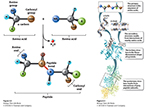
Nucleic acids: merely different storage materials of reproducible ribbons of "order" that provide the "blue print" for the maintenance of the living structure.

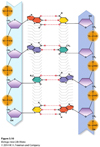
Sugars, Polysaccharides and Fats: paradoxically, though essential for life to exist, these are the transient, and yet stable forms of all living organisms.



One of the curiousities about Life, is that it also always requires an inherent, sustainable form of energy to maintain it's existence.
The currency? One particular nucleotide, ATP!!!


So, to summarize some of the concepts of "living organisms" that we have touched upon in this lecture....
(a) Living organisms do exist, subject to the laws of chemistry and physics,
(b) One of the central characteristics of living organisms (but clearly not the only one, is the presence and maintenance of some type of reproducible boundary
(c) the very act of living requires energy. But according to the "laws of physics.....energy can neither be created nor destroyed", so......
(d) to survive -at least in our world- living organisms use organic atoms..."CHONPS " to effectively cycle and recycle the available energy in all its forms.......at the expense of the local environment.
(e) Paradoxically, therefore, as a consequence of all these "requirements", I would suggest that a single living organism cannot exist (for any protracted length of time) by itself........?
We then looked at some of the biochemical aspects of life, and the rules that are shared by all living organisms.... the importance of a good handshake, and why the living molecular world adopts either an "English" approach or an "American" approach to organization.
Neither is "wrong" but the adoption of one or the other has obvious benefits....
Then we discussed the Biochemistry of Living forms,....giving an indication of some of the more general constituents of living organisms, as we know them.
Organic matter: Carbon, Hydrogen, Oxygen,…(C H O N P S)


...and how good "hand shakes" with homochiral forms of molecules that are synthesized from these "organic" elememts L-amino acids and D-Sugars allow for the formation of intricate, stereo-specific structures which make up the living world.
In all this analysis of life we must not forget that Biology is a Science, and thus we can only use "scientific arguments" to explain our biological world. Scientific explanations are not based upon beliefs, rather they are built upon previously determined explanations of the natural world that are modified as new information becomes available, or as new tests are brought to bear that contest the current explanation.

By way of an analogy: the world is good facsimile for- or perhaps even a metaphor for- a living organism....
The concept of "Gaia" as a living organims is a little fanciful, perhaps, but it can be argued that the earth truly meets all the criterea that we might deem necessary for it to be considered "alive", after all, it embodies all the life forms that we know.
Do people really believe that the earth is actually a living organism? Some do, Yes.
Are they crazy? Is this real Science? ....How do you know?
Even though researchers have spent, minimally, the better part of 60 years studying and researching the subject, is it a Science?
What makes it a Science?
How do we, as Biologists, claim to know anything about Biology?
Where should Biology be in the undergraduate curriculum?
More importantly, how dare we think that we -as biologists- know more than all the other learned scholars in other disciplines thoughout the world about Biology?
.....But what am I that dare
Fancy that I can
Better conduct myself or have more
Sense than a common man?William Butler Yeats "Stream and Sun at Glendalough"
First of all let me suggest to you what the Science of Biology is not, and what Scientists ought not do.
Science is not a religion nor is it a "belief system", although many of us use the affirmation that we "believe" certain scientific -statements -theories, -hypotheses etc. to be "true".
Scientists shy away from using the word "fact". Today's facts are very often tomorrow's ill-considered observations.
When Scientists do use the word "fact" they normally use the word to describe more than a mere scientific observation. They generally do so ONLY if the observation has been checked, re-checked, tested many times and then re-checked. So much so that there is no "credible" reason to keep on testing its veracity.
Be aware of the difference between "fact" and "theory".
So, Scientific explanations of the world are NOT essentially based upon beliefs, rather they are built upon previously determined explanations, and are subsequently MODIFIED as new information becomes available, or as new tests are brought to bear that contest the current explanation.
In its purest form, Biology, like all the Natural Sciences is a "self-correcting'', scientific discipline which, over time (as knowledge accumulates), reduces the risk that any given premise taken is substantially flawed.
The mechanism by which our current understanding of living forms is tested is termed the "Scientific Method", which is the rubric that allows for an objective evaluation of information, that is designed to remove falsehoods, rather than to refine or define any specific "truths"..
Concepts in Science "ideally" are quite different from most religious beliefs, whatever your religious persuasion.
This is not to impune the integrity or purpous of religion(s), merely to differentiate between the two approaches that can be used to understand our world, and our place in it.
Almost by definition, "faith" in religion refers to a belief or a series of beliefs that extend BEYOND the Natural world, and deals with concepts that are accepted without empirical [testable] evidence. Even historical documents are very often "hearsay" unless -scientifically speaking- they can themselv be tested.
You have heard of the phrase "the exception proves the rule". This phrase ultimately defines Scientific the scientific approach. The phrase doesn't mean that unless there are exceptions there can be no rules.....
Science differs from religion and other disciplines in that it is the very essence of science to test and retest explanations against observations in the natural world.
That is not to say that every so often these two different approaches to our understanding of the world never collide.... and sometimes with our limited knowledge of the natural world Science comes up with more than one viable explanation of a Scientific understanding.
Biology, as a scientific discipline, is ultimately a "truth-seeking process"... it's assertions, however, are NOT a collection of unassailable "truths".
Indeed, all too often some of the current "truths" will eventually be modified -subject to futher information- or even proven to be completely "false".
Scientists often use the term, law, hypothesis or theory to describe given levels of scientific understanding that have received varying degrees of scientific scrutiny.
A Scientific Law is "a descriptive generalization about how some aspect of the natural world behaves.... under stated circumstances".
A Scientific Hypothesis is a "working assumption based upon observations" that can be tested.
A A Scientific Theory is "an explanation of some natural phenomenon(a) that can incorporate facts, laws, inferences, and tested hypotheses to provide a conceptual framework that, both explains existing observations, AND predicts new ones -that are also able to be tested".
The mechanism by which our current understanding of living forms is tested is termed the "Scientific Method", which is the rubric that allows for an objective evaluation of information, that is designed to remove falsehoods, rather than to refine or define any specific "truths".
This Scientific Method, itself, is ultimately predicate on two fundamental components......
(a) the use of Western logic -promoted by Aristotle in Ancient Greece, and
(b) a Russian proverb:
"Doveryai no Proveryai".
borrowed (with great effect) by Ronald Reagan in the '80's
Aristotle and the application of deductive logic: We use deductive reasoning when we begin with things that we know to be true, put them together, and follow them to the conclusion(s) to which they lead.
Logic has been defined as "the study of the rules of correct thinking".
There are, however, other forms of "logic"
A common form of "deductive reasoning" uses the concept of a conditional or hypothetical statement.
If it rains, then the sidewalks will become wet.
It is raining.
Therefore, the sidewalks are wet.
Any understanding of "logic" must, however, take into account the potential for fallacious (false) arguments. These would be a series of statements that appear to be cogent arguments but which are completely illogical and false in their conclusions. There are formal fallacies, which break specific rules of logic, and there are informal fallacies, which usually are phrased to appear as a resonable argument but the statements purporting to be premises do not support the conclusion.
One example of this is called a "circular argument", in which the conclusion turns out to be part of the premise.
Why is counterfeiting illegal?
I'll tell you why.
It is because it is against the law!
Scientific arguments (hopefully) are logical arguments that are testable....experimentally giving rise to "empirical" evidence, not just thoughts and affirmations.
Such experiments often give rise to results that cannot be explained by current "theories" of Science. Hence the statement that Scientists are not after "truth" as much as they are after "theories that fit all the known data".
What does one do, as a Scientist, If the results from an experiment cannot be explained by current "ideas" or even "theories" of Science?
So, what is the "Scientific Approach" ? 
In my mind the person who truly embodies the idea of the Scientific Approach and adopted it into everything he did isn't even a person at all. He is a fictitious character who was conjured up by a man who might be considered to be the true "father of forensics", Sir Arthur Conan Doyle.
In the real world the concept of Spontaneous generation was famously refuted by Louis Pasteur in the 19th century, but the initial "broad range" experiment was performed by Francesco Redi some 200 year earlier.


Observation:
Scientist’s idea:
Next steps:
Refine this idea into a(n) hypothesis. In other words, refine the idea that can be tested and then layout exactly how you might want to test the idea? What is your prediction?
Design the experiment. How exactly will you test your hypothesis?
Collect the data.
Analyze the data.
Decide how you will know whether your experiment supported or did not support the hypothesis.
make observation(s)......derive a more "refined" hypothesis.
Unfortunately, as you know, very often the answer(s) that you get from any given question depends upon how you ask the question!!!
Observations and arguments can also be "inherently flawed" in their reasoning or context-and ought to be tested... perhaps even in their premise.


Thus, a major part of scientific progress comes from researchers trying to ask the right questions in the informative way. What do I mean by this?
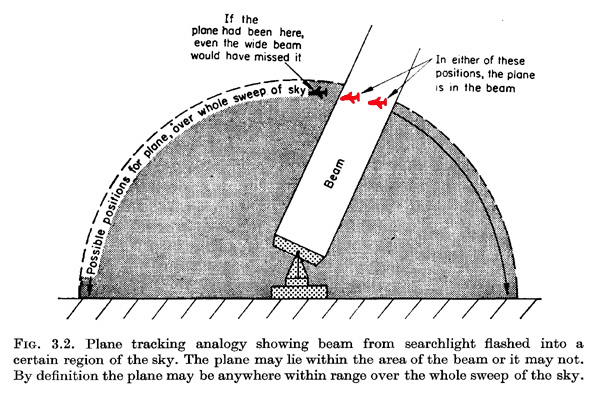


The book and launchpad (Chapter 1.1) give a number of potential examples of the scientific method at work...

"Let’s say you observe a hummingbird like the one pictured in Fig. 1.1 hovering near a red flower, occasionally dipping its long beak into the bloom. What motivates this behavior? Is the bird feeding on some substance within the flower? Is it drawn to the flower by its vivid color? What benefit, if any, does the flower derive from this busy bird?"
if, then ......
- The colour of flowers has a powerful effect upon humming bird behaviour.
“Failure is instructive. The person who really thinks learns quite as much from his failures as from his successes.”
- John Dewey (20th Century philosopher)
The Null Hypothesis: a scientific approach that is rooted in deductive logic, with the general aim being to refute or prove the null hypothesis to be FALSE.
Generally, therefore, the null hypothesis is the opposite of- or takes a countrary position to- the hypothesis that is really being tested..... and would only be proven to be correct if the idea that is being tested turns out to be false.
i.e. - in the case of the humming bird if you wanted to test the importance of colour on the behaviour of the bird the null hypothesis might be
"Flower Colour has NO EFFECT on the behaviour of the humming bird".
Thus, if one is able to reject the null hypothesis, then the alternative hypothesis: that there IS an effect is proven...."proof by contradiction" and we can move forward from a broad hypothesis to more specific test, perhaps as to whether different colour shave different effects upon the bird's behaviour.
Null Hypothesis (allows for "proof by contradiction"): humming birds spend the same around flowers of different colours.
While all this sounds very mundane and more than a little tedious, it does provide the very foundation of our Scientific Approach, and allows for an "objective" validation of any querky notion that we can come up with.
“The whole of science is nothing more than a refinement of everyday thinking.”
- Albert Einstein
.........How we refine our everyday thinking, however, is fundamentally based upon the questions we ask, and how we go about finding the answers to those questions
However, one of the potential problems with any science, or any discipline that is based upon "observations", is whether or not the observation(s) that can be made today actually APPLIES to the situation or question(s) being addressed. Barry Bonds vs. Hank Aaron vs. Babe Ruth.
Indeed, it can be critical that, when you are addressing a scientific question....you know what question is being asked, and that you are asking it in the right manner... Nobel Prize in Chemistry 1989
It is also be critical that -in an "ideal world" - valid scientific questions are unencumbered by fluctuating social mores, and potential missinterpretation that result: as exemplified by Copernicus (1530's); Galileo (early 1600's)...... The Texas School board, modified curriculum language in 2017, which heavily implied experts were "uncertain about the theory of evolution... and the more closer to home example, where Cobb County school board (early 21st century)...
Of course... there are limits (?)... human cloning??.
Aristotelian based logic along with Scientific Method are a POWERFUL combination...
So, having addressed various smaller questions using the Scientific Methodology....let's try to tackle some of the potentially more grandiose questions that might be thrown our way.
How Do We Know? Can we still apply "observational principles" in the current universe to address such lofty issues that -by definition- must have occurred before anyone was able to make any observations.
The answer is apparently, Yes.
The Luminosity of "old" star clusters changes, radioactive dating of old stars (the element Thorium decays with a half life of 14.05 Gyr) as well as the presence of "white dwarfs".
Can we now apply such observationally based Scientific methodology to questions, concerning our own earth, and may be even apply such methodologies to questions about Life itself, and or where do we (did we) come from?
Well, geologists and paleantologists would claim the answer to that would again be a resounding YES!
Earth’s geological history is divided into eras and periods. The boundaries between these rather large units of time are based on differences between geological changes... their fossil biotas. Review: geological changes and biotic changes
As one of the previous fires shows, the Earth’s early atmosphere lacked free oxygen, and was predominantly made up of, carbon dioxide (CO2), methane (CH4), carbon monoxide (CO), ammonia (NH3), free hydrogen and water vapor. Oxygen came along, apparently as a bi-product, and accumulated in relative abundance AFTER (or as a result of?) simple life forms (prokaryotes?) evolved the ability to use WATER as a source of hydrogen ions, in photosynthesis. Increasing atmospheric oxygen subsequently allowed the further biological development of these prokaryotes. Thereafter, the increasing oxygen in the environment potentiated the evolution (development) of a somewhat distinctive branch of living organisms -the eukaryotes ?- and the potential for multicellular organismal existence. Review: Temporal view of living organisms
Physical changes that have aparently occurred on and in the Earth over these times, have also included a gradual cooling and weakening of the forces that caused the immense,and -as we shall see- continental drifts that occured, as we shall see have been quite significant continental drifts.
Throughout Earth’s history, they would suggest, the continents have shifted, sometimes separating, at other times colliding.
Rapid climate changes, massive volcanic activity , and major shifts in sea levels and ocean currents have all had dramatic effects upon the evolution of life on Earth. Review Sea level changes, Temperature Changes
In addition, over its life time, the earth has been subject to a number of "significant" external events, such as meteorite collisions and indirect interactions with comets , which have also changed climatic conditions -changing the potential for life to exist on the earth.
There is a considerable body of evidence to suggest that a meteorite may have been at least partially the cause of the somewhat abrupt mass extinction at the end of the Cretaceous period.. or alternatively...Volcanoes in the Deccan Traps... Even so, there are though to be at least 5 different major mass extinctions in the life of this planet
The ages of rock layers in Earth’s crust can be determined from their position -relative to one another and the presence of somewhat novel metals such as iridium and other radioactive element. more rocks.
Much of what we know about the history of life on Earth comes from the study of fossils.
As with the universe, radioisotopes have supplied the key for assigning absolute ages to rocks, giving rise to our perspective on "Relative Time", Thus, changes in geological time can be related to the metronomic (or consistent) isotopic changes in the environment.
32P 14.3 days, 3H 12.3 years, 192Ir 73.83 days 14C 5,700 years and 40K 1.3 billion years
The fossil record, although only partially complete (little more than 300,000 fossil species have yet been described), reveals broad patterns in the evolution of life.
Fossils records show that many evolutionary changes are also gradual (in geological time). And -as new findings present themselves, these records can be altered and "finessed".
Review: 


While these changes do explain some of the changes that have occurred through geological time, they also demonstrate that an incomplete record -in a similar way to faulty reasoning (such as circular arguments or the use of "invalid probes") can sometimes falsely suggest or even conceal times of rapid change, or completely redirect potential heritable linkages.
But we are getting a little ahead of ourselves....
In the early to mid 19th century, at about the same time that a researcher called Sir Charles Lyell was appreciating the idea that the age of fossils somehow related to the age of the rocks in which they were found......
Darwin began his "Voyage of the Beagle" (1831)
and his first opus: The Origin of Species and the crucial determination.....
...Darwin the reluctant rebel.
As a result of his travels, Darwin developed his idea of "evolution by natural selection" by carefully observing nature, especially during his voyage around the world, and comimg up with a rationale for how he understood that these variations could exist..
He based his theory (little "t") on well-known facts and some key inferences. Obviously, he had no examples of the action of natural selection, so he based his arguments on his current knowledge of artificial selection by plant and animal breeders of the day.
Modern Genetics has since elucidated the mechanisms of heredity, which have provided a solid base that supports and substantiates (to a large extent) Darwin’s theory. These findings, along with others over the subsequent years, began to change the "t" into a "T"

